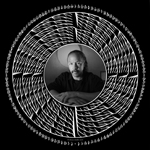Dr. Warren Burt Interview
Dr. Warren Burt, composer, explains the impact of Wilson’s sonic structures on future directions in music.
Interview Transcript of Dr. Warren Burt, Composer
Dr. WARREN BURT: I’m an intonational slut. I’ll sleep with any scale for a week as long as it is a deep and serious and meaningful relationship with a scale of course.
Back around 1988, I’d begun multiplying prime numbers against each other to get scales of harmonics and later somebody said to me, probably around 1990, “Ohhh, that’s a lot like what Erv Wilson and John Chalmers are doing.” And so then in August 95 when I was in LA, I actually met Erv and he turned out to be completely welcoming and charming and you know, wide-ranging in his conversation.
STEPHEN JAMES TAYLOR: What’s your impression of his abode and how it reflects upon who he is?
DR. WARREN BURT: I and my wife have two different opinions about that. I find his house to be a wonderful treasure trove where everything is thrown all over the place and yet I’m sure Erv knows where everything is. She found it completely horrifying the level of mess there and completely inspiring with all the instruments.
I think Erv explores wonderful numerical structures some of which have a connection with sound, some of which relate to already existing music and some of which propose future musics. Wonderful numerical structures generate not just a scale or two, but whole families of musical identities. I think what Erv will be most remembered for is giving us a gift of not just some wonderful structures, but structures which propose whole families of new activities.
Erv has done so many different investigations into different kinds of structures and each one demands like really intricate investigation into what it actually does. It’s hard to actually spin off say this, this, and this as his most valuable contributions. I think his work is so fertile that everyone who takes it seriously probably brings out something totally different from it and that’s actually the mark of a good teacher. Erv may never have had a formal teaching position, but he was certainly a mentor and a teacher in the oral tradition sense and so anyone who every came in contact with him, probably gets something different from his work.
STEPHEN JAMES TAYLOR: Would you say it’s accurate to consider him some sort of cartographer?
DR. WARREN BURT: Sure, he’s mapping out universes of sound and number. That’s definitely cartography. For example, the Mount Meru triangles. I generated a catalog of about 270 scales from the Mount Meru Triangles and that was just using the first 11 of them. There’s enough harmonic resource there to keep several civilizations busy for several eons.
In fact, I wrote some routines which are now incorporated in John Dunn’s algorithmic program ArtWonk where you can have four or six or seven or eight or nine different additive number sequences and you can have the computer calculate those and modulo them by any number you want so that an additive sequence can actually be used as a so-called “random” unquote information generator.
I did a piece a few years ago, about 2006, I think called “Proliferating Infinities” and “Proliferating Infinities” is 264 3-minute pieces for sampled harp and it should be done as an installation some day. In each piece, there’s one of those scales and the number sequence, the additive sequence that generated the scale, is also used to generate the sequence of the pitches and the durations.
Film by Stephen James Taylor. For more information on the Erv Wilson documentary, SURFING THE SONIC SKY, please continue to explore our site.
Latest posts by Stephen James Taylor (see all)
- Stephen James Taylor Presents New Works on April 13-14, 2019 - March 30, 2019
- Sonic Sky Records Announces Its First Release - September 14, 2015
- How to Make Music on the Wilsonic iPad App – Moments of Symmetry - March 4, 2015


No Comments yet
Be the first to write a comment